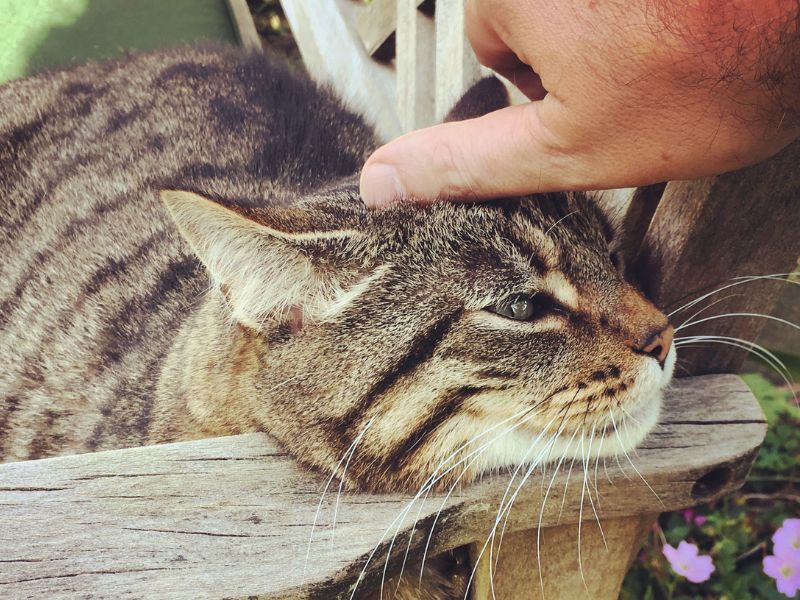Pet Urinary
Our experienced veterinary team specializes in a range of surgical urinary procedures for cats and dogs, providing affordable care to ensure the health and well-being of your furry companion.
Understanding Urinary Conditions in Pets
Urinary issues can affect both dogs and cats, leading to discomfort and potential health complications. Some common urinary conditions include urinary blockages, bladder stones, and chronic urinary tract infections (UTIs). These conditions can cause pain, difficulty urinating, and even life-threatening complications if left untreated.
VULVOPLASTY
(REMOVAL OF EXCESS SKIN AROUND THE VAGINA TO HELP PREVENT CHRONIC UTIS)
Vulvoplasty is a surgical procedure performed in female dogs to remove excess skin around the vagina. This procedure helps prevent chronic urinary tract infections (UTIs) by reducing the risk of bacteria buildup and promoting proper hygiene.


Perineal Urethrostomy (PU)
(TO TREAT URINARY BLOCKAGE IN CATS)
Perineal urethrostomy is a surgical procedure performed in male cats to help alleviate urinary blockage. This procedure involves creating a new opening for the urethra to allow for easier urination and help prevent future blockages.
Perineal Urethrostomy (PU) FAQs
What Is A Perineal Urethrostomy?
A perineal urethrostomy (PU) is a surgical reconstruction of the urethra (the tube that carries urine from the bladder to the outside of the body) that creates a larger opening for your cat to urinate. When the causes of your cat’s urinary obstructions have not been successfully managed through other means, a PU can be considered as the next step.
The goal of PU surgery is to reduce the chance of your cat experiencing a urethral obstruction in the future. Urethral obstructions are a life-threatening emergency and typically require the placement of a urinary catheter and comprehensive medical care. Surgery alone does not prevent or address the underlying cause of obstruction or blockage.
What Causes A Urinary Blockage?
There are several known causes of urethral obstructions, all of which will require long-term management after surgery:
- Urinary stones
- Mucus plugs
- FLUTD (Feline Lower Urinary Tract Disease)
- Tumors
- Trauma
Ongoing management and supervision of your cat’s urinary health by your regular veterinarian is crucial to your pet’s recovery after surgery.
How Will I Know If My Cat Needs Perineal Urethrostomy (PU) Surgery?
If catheterization has been needed on multiple occasions to alleviate an obstruction and attempts at medically managing the underlying cause have been unsuccessful, your vet may suggest PU surgery.
How Is The Perineal Urethrostomy (PU) Surgery Performed?
Before a perineal urethrostomy can be performed, the obstruction of the urethra must be relieved. Urethral obstructions can cause life-threatening complications and your pet will need to be treated and stabilized prior to surgery. Because Helping Hands performs only outpatient surgeries and is not a full-service emergency clinic, we require your cat to have its urinary obstruction relieved by either your regular veterinarian or an emergency clinic prior to scheduling surgery.
In cases where a urethral stone causes the obstruction, the stone will need to be pushed back into the bladder. Our veterinarians require X-rays of your pet’s bladder and urinary tract prior to scheduling the surgery to determine if this is needed. Although the majority of urinary stones can be identified with X-rays, some types of stones cannot. An ultrasound of the urinary tract is the best way to screen for all bladder stones, as well as other pathologies such as tumors, scar tissue, and abnormal anatomy that may cause post-operative complications. We will need a copy of your vet’s medical notes, X-rays, and any other diagnostics performed before surgery can be scheduled.
Once your pet has been cleared for surgery, a PU will be performed by removing his penis, neutering him if he is still intact, and creating a larger opening in the urethra closer to the bladder which will be sutured to the nearby skin.
Please Note: Helping Hands does not perform cystotomy surgeries.
How Will I Need To Care For My Cat Following Perineal Urethrostomy (PU) Surgery?
Immediately after a PU surgery, we strongly recommend having your pet transferred to a 24/7 emergency facility where they can be monitored closely, receive additional medical support and pain management, and ensure the delicate surgical site is protected.
Once your cat returns home, your most important responsibility is to keep the E-collar on so they cannot reach the incision. The tissue involved in the surgery is very thin and delicate, and if your cat licks or disturbs the incision in any way, it may be difficult or impossible to repair. You must keep the E-collar on at all times until your veterinarian tells you it is safe to remove it. If your cat has trouble reaching his food with the E-collar on, you can try elevating their dish slightly so that the collar can fit around it, or you can feed them by hand. Just do not remove the E-collar.
It is normal for your pet to have bloody urine for a few days following the surgery, and they may also have some accidental urination as they are healing. This will be temporary. We recommend keeping your cat in a space with tile or linoleum flooring during their recovery so any accidents can be cleaned up easily. If blood or urine stains their back legs or belly, you can use a wet washcloth to clean them, carefully avoiding direct contact with the incision. Do not wipe the incision area directly.
You will need to be prepared with an appropriate paper litter when your cat returns home. Clay litter will stick to his incision causing trauma and delayed healing. You can use shredded newspaper, or if your cat prefers a pelleted litter, you can purchase pelleted paper litter (Yesterday’s News) from most pet stores. You can return to clay litter after the incision has healed.
What About Long-Term Care After My Pet’s Perineal Urethrostomy (PU) Surgery?
Ongoing management and supervision of your cat’s urinary health by your regular veterinarian is a crucial element to your pet’s success after surgery. You will need to follow up with your regular veterinarian within two weeks of surgery. PU surgery does not prevent the underlying cause of urinary blockages. Urethral obstruction can still occur for multiple reasons. Due to the increased size of the new opening in the urethra, cats who have had a PU are more likely to develop new urinary tract infections. You and your veterinarian will need to develop a preventative plan in order to decrease the risk of ongoing urinary problems and infections. If your pet needs a PU, surgery is the only step in managing urinary tract issues.
How Can I Schedule My Cat’s Perineal Urethrostomy (PU) Surgery?
Helping Hands does not perform Cystotomy procedures and your pet must be clear of stones prior to us performing a PU surgery. PU surgeries at Helping Hands must be scheduled in advance. We do not accept walk-ins or cats who are currently blocked and have not been stabilized. Once our veterinarians have reviewed your pet’s medical records and cleared them for surgery, your cat will be given our first available appointment.
Bloodwork ($105) is required for your pet and will be run on the morning of surgery. This blood work will help us to determine the best anesthetic plan and screen for potential complications that may need to be addressed prior to anesthesia. Although any potential risk identified will be considered, remember that bloodwork does not identify or eliminate every potential anesthetic risk or complication.
We are an outpatient facility, meaning patients go home the same day they are treated. While clients may take their pets directly home after surgery, we always recommend overnight monitoring at a 24/7 emergency hospital.
Additional Resources For Further Information On Perineal Urethrostomy Surgery:
Veterinary Surgery & Dentistry Services
in Richmond, VA
Pet Amputation
Pet Dental Procedures
Pet C-Section
Pet Dewclaw
Pet Exploratory & Foreign Body Removal
Pet Eye Procedures
Pet Growth & Mass Removal
Pet Hernia Repair
Pet Knee Repair
Pet Organ Removal
Pet Spay & Neuter
Pet Stomach
Pet Urinary
Pet Wound & Laceration Repair
Urinary
(to Treat Urinary Blockage in cats)
(Removal of excess skin around the vagina to help prevent chronic UTIs)
Pet Surgery Additional Fees
(if deemed appropriate)
(90+ lbs)
